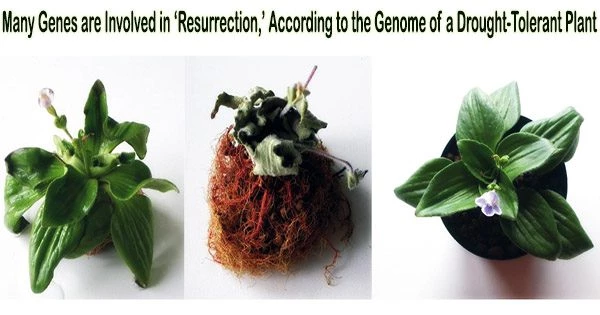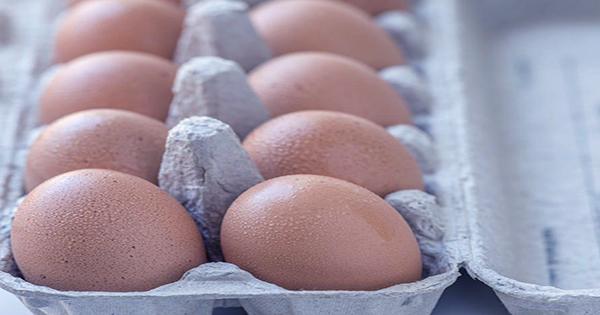Some plants can go for months without water before turning green once more in a little downpour. A “miracle gene,” as demonstrated, does not cause this by a recent study from the Universities of Michigan and Bonn. Instead, a vast network of genes almost all of which are also present in more vulnerable varieties has led to this ability.
The results have already appeared online in advance in the journal “The Plant Journal.” The print edition will be published soon.
In their study, the researchers took a close look at a species that has long been studied at the University of Bonn the resurrection plant Craterostigma plantagineum. It bears its name quite rightly: In times of drought, one might think it is dead. But even after months of drought, a little water is enough to revive it.
“At our institute, we have been studying how the plant does this for many years,” explains Prof. Dr. Dorothea Bartels from the Institute of Molecular Physiology and Biotechnology of Plants (IMBIO) at the University of Bonn.
Her interests include the genes that are responsible for drought tolerance. It became more and more obvious that this aptitude is not brought about by a single “miracle gene.” Instead, a large number of genes, the majority of which are also present in species that do not respond as well to drought, are at play.
The plant has eight copies of each chromosome
In the current study, Bartel’s team, together with researchers from the University of Michigan (USA), analyzed the complete genome of Craterostigma plantagineum. And this is built quite complex: While most animals only have one copy of each chromosome from the mother and one from the father, Craterostigma possesses eight copies of each chromosome. Another name for this type of “eightfold” genome is octoploid. Humans, on the other hand, are diploid.
However, this program is normally switched off at germination and cannot be reactivated afterwards. In resurrection plants, in contrast, it remains active.
The botanist
“Such a multiplication of genetic information can be observed in many plants that have evolved under extreme conditions,” Bartels says.
But why is that? A probable reason: If a gene is present in eight copies instead of two, it can in principle be read four times as fast. Therefore, an octoploid genome makes it possible to create enormous amounts of a needed protein relatively quickly. Additionally, it appears that the development of drought resistance depends on this capability.
Some genes linked to enhanced drought resistance are even more frequently duplicated in Craterostigma. These include the so-called ELIPs the acronym stands for “early light inducible proteins,” as they are rapidly switched on by light and protect against oxidative stress. They occur in high copy numbers in all drought-tolerant species.
“Craterostigma has close to 200-ELIP genes that are nearly identical and are located in large clusters of ten or twenty copies on different chromosomes,” Bartels explains. Drought-tolerant plants can therefore presumably draw on an extensive network of genes that they can rapidly upregulate in the event of drought.
Drought-sensitive species usually have the same genes albeit in lower copy numbers. This is also not surprising: Most plants’ seeds and pollen can frequently still germinate even after extended periods without water. In order to protect against drought, they also have a genetic program.
“However, this program is normally switched off at germination and cannot be reactivated afterwards,” the botanist explains. “In resurrection plants, in contrast, it remains active.”
Most species “can do” drought tolerance
Drought tolerance, then, is something that the vast majority of plants “can do.” The genes responsible for this ability most likely first appeared very early in the process of evolution. However, in species that can withstand drought, these networks are more effective and active during the entire life cycle.
The “drought program” is not present in every cell of Craterostigma plantagineum, however. This was shown by researchers from the University of Düsseldorf, who were also involved in the study. For instance, different drought network genes are active in roots during desiccation than in leaves.
This finding is not unexpected: Leaves, for instance, need to protect themselves against the damaging effects of the sun. They are helped in this by ELIPs, for example. The plant creates photosynthetic pigments that at least partially absorb photons when it receives enough moisture. During a drought, this natural defense is essentially ineffective. In contrast, roots don’t have to worry about becoming sunburned.
The study advances knowledge of why some species experience drought so little. Therefore, it might eventually help in the breeding of crops like wheat or corn that can withstand drought better. These are probably going to be more in demand than ever in an era of climate change.
Participating institutions and funding:
In addition to the University of Bonn, Michigan State University (USA) and Heinrich Heine University Düsseldorf were involved in the study. The US National Science Foundation (NSF) and the German Research Foundation (DFG) funded the work.
















